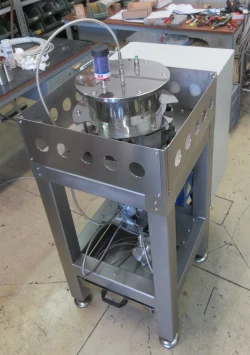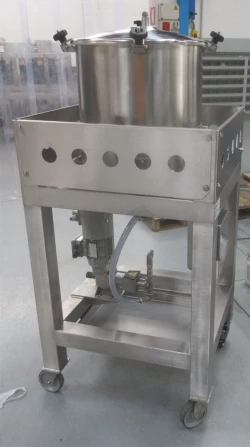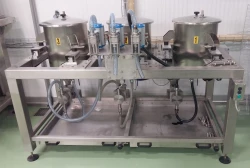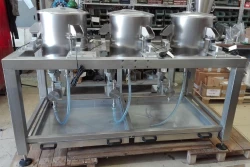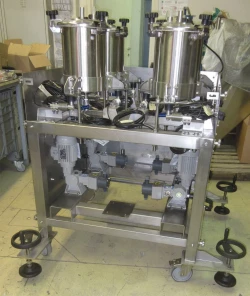Volumetric and Gravimetric Dosers for Liquids
series DLQ, DLQW, DLQY
Volumetric doser for liquids series DLQ
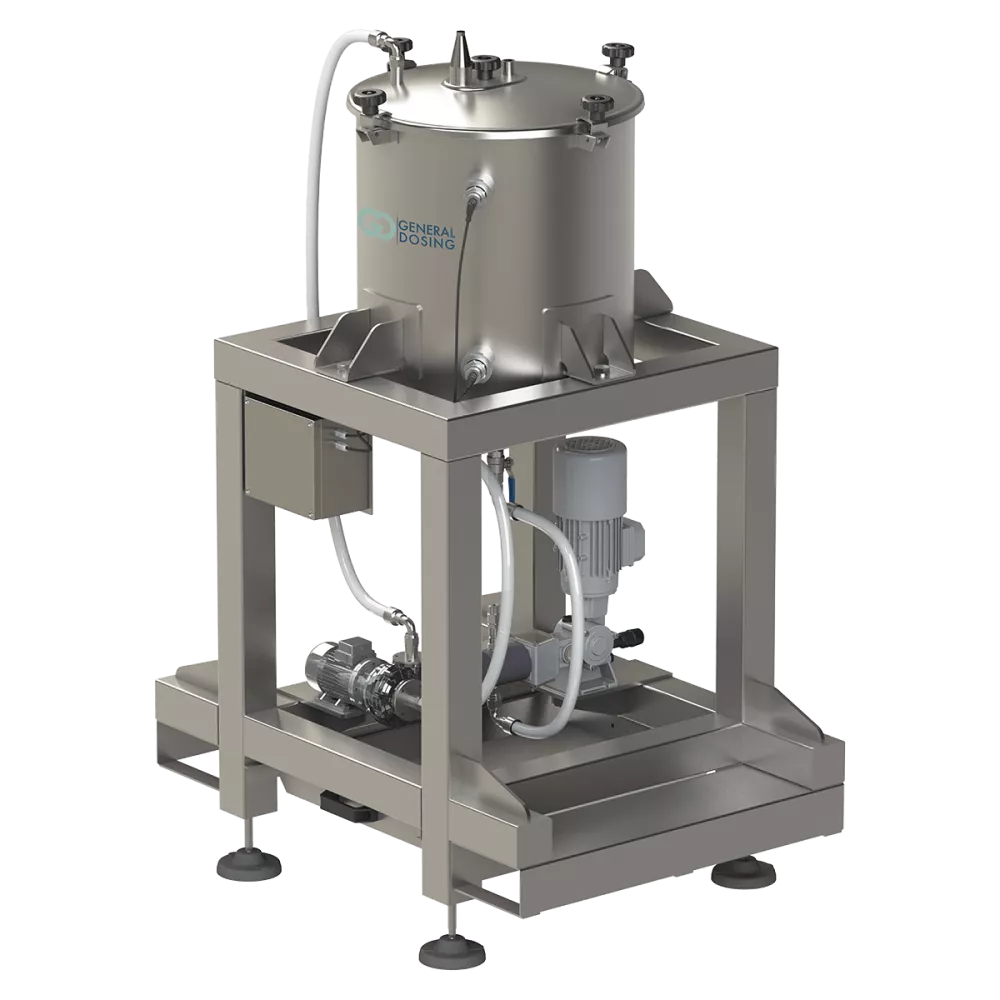
Gravimetric doser for liquids installed on load cells series DLQW
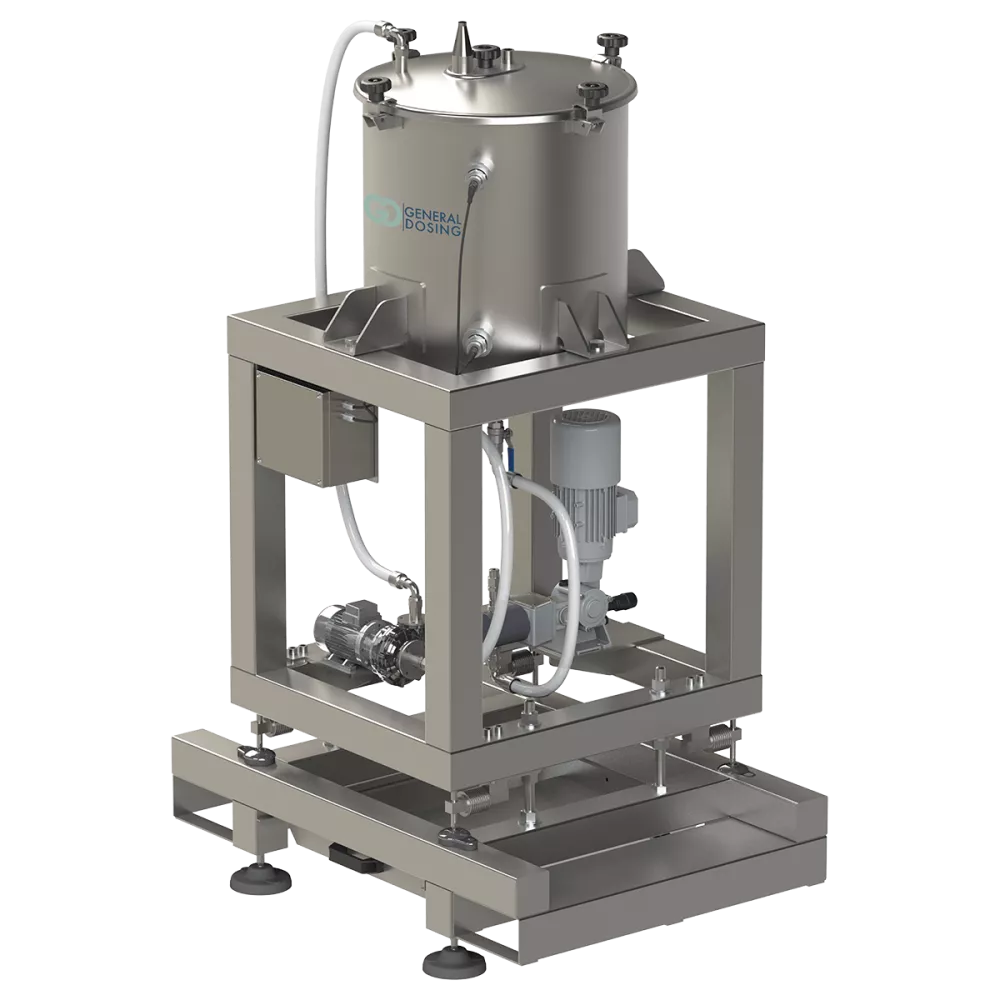
Gravimetric doser for liquids with the tanks hanging on load cells series DLQY
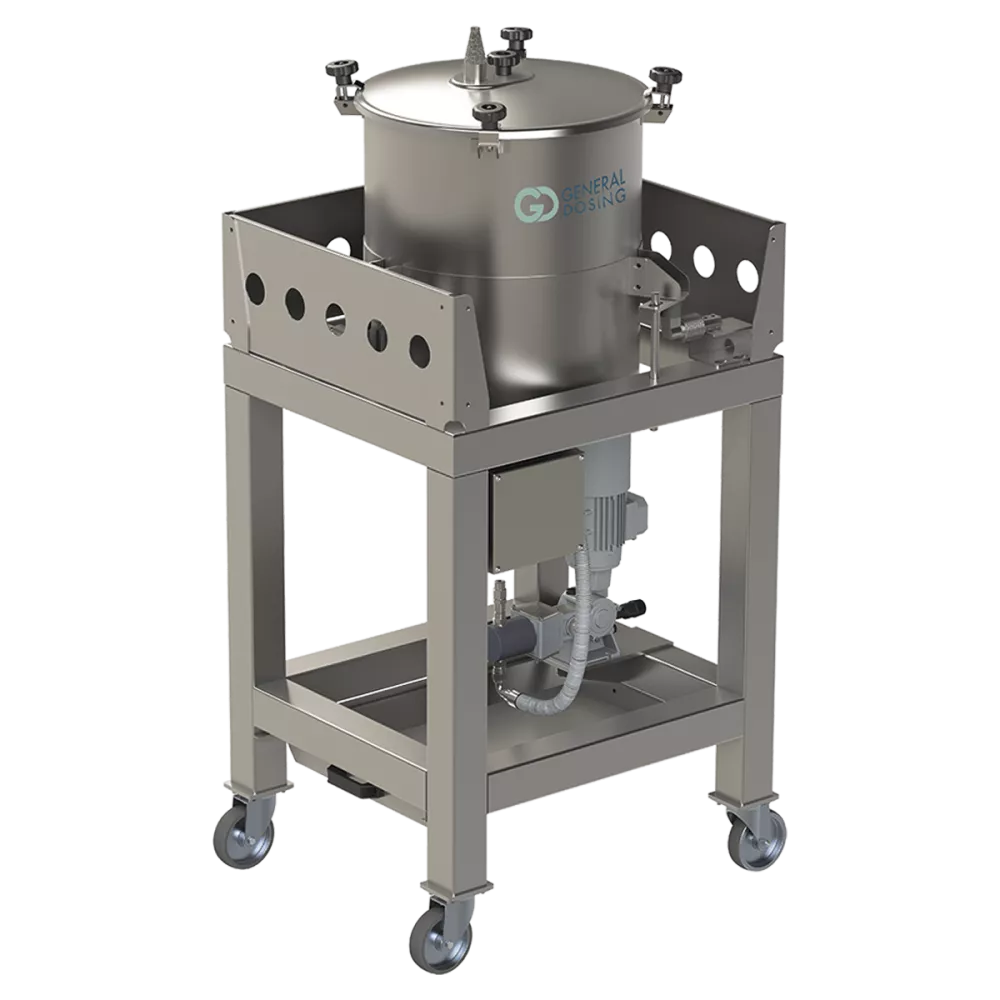
These machines are specifically designed for dosing liquid products with a viscosity up to 5.000 mPas.
The dosing device is constituted by a pump. Different types of pumps are available to be adopted according to the products characteristics and the dosing features required.
In DLQ, DLQW and DLQY dosers are generally installed gear pumps, progressing cavity pumps, rotary lobe pumps, piston pumps, peristaltic pumps and diaphragm pumps as well. Diaphragm pumps are suitable for batch dosing or for transfers liquids from a tank to another. The other types of pumps are preferably used for continuous dosages because they have a non-pulsating flow or a high frequency pulsating flow, so they can work with continuous and regular throughput.
Every type of pump is available in a wide size range according to the manufacturer’s standards.
The DLQ, DLQW and DLQY typical arrangement includes a dosing tank, a pump group and an assembly structure that houses the various components and their connecting pipes and fittings.
The entire machine can be provided with a forkable structure or mounted on wheels to help moving it to the washing and sanitization area. The structure houses also an entirely removable containment tank.
The wide doser range DLQ, DLQW and DLQY is constituted by various standard sizes that allow to cover a flow rate from a minimum of 1 lt/h to a maximum of 2.000 lt/h, more or less with all the adoptable types of pumps according to the characteristics of the product to dose.
Except for the diaphragm pumps, that are electro-pneumatically operated, the other types of pumps are driven by an electrical motor. The diaphragm pumps have their specific working range that can be slightly varied regulating the supply pressure. Generally it is possible to make them work in a capacity range from 1 to 1,5 from minimum to maximum.
The motorized pumps are operated by worm type gearboxes and three-phase electric motors. Certified Atex motorizations are available when requested.
The motorizations are dimensioned to be controlled by a frequency converter through which the pump speed is regulated to obtain the wanted capacity in a minimum and maximum predefined range. The real flow rate achievable depends also on the characteristics of the product to dose. In general it is possible to cover at least a range of 1 to 3 between minimum and maximum.
The standard dosing tanks have a cylindrical shape with conical or rounded bottom and they are available with different capacities.
In cases where it is necessary to maintain the right viscosity of the liquid it can be provided a tank with heating space where proper resistances are inserted. In the gap usually recirculates diathermic oil or water which is heated by an external boiler with a properly dimensioned exchanger. The thermal insulation with the environment is made with rock wool panel protected by an outer welded sheet.
An alternative system is constituted by electrical resistive heating bands, that are easily applicable out of the tank, and equipped with their own regulation thermostat.
On the bottom it is welded a sleeve with a DIN or TRICLAMP fitting for the dosing pump connection. There can be also a quick emptying sleeve with its manual ball valve.
The dosing tank can be equipped with a propeller agitator if there are solid particles in the liquid to disperse evenly.
The agitator is installed on the dosing tank lid. The lid is bolted to the tank and can be fully removed together with the agitator in order to accomplish the ordinary cleaning and maintenance operations.
The agitator is operated by an asynchronous electrical motor properly dimensioned to be driven through a frequency converter. This way it is possible to choose the most effective rotation speed in order to obtain a good dispersion.
As an alternative, or in addition to the agitator, it is possible to install an auxiliary recirculation pump to keep the liquid moving in the tank and not let the solid particles to settle on the bottom.
The dosing tanks have a completely removabIe lid and it is blocked with knobs.
If the liquid is automatically fed into the tank, or by gravity or with a transfer pump, on the lid there is an inlet sleeve and a vent equipped with an anti-intrusion filter. Are also available desiccant barrier filters in case of nitrogen saturated tank used when the liquid is sensitive to the environment humidity.
The lid can be equipped with proper sphere washing nozzles to perform the cleaning in place.
As accessories proper level sensors can be installed to manage the tank load.
According to the dosing modalities there can be interception and partialisation devices, such as on-off and proportional valves, non-return or counter-pressure valves and hydro-pneumatic accumulators to absorb the dosing flow pulses and stabilize the flow rate.
In volumetric dosers DLQ it is possible to control the flow rate installing on line proper measuring devices such as liter counter, magnetic and massive devices. These devices are settled in function of the liquid characteristics so they need specific calibrations that has to be periodically verified.
In the gravimetric version, the doser tank can be installed on a proper scale platform (DLQW) or hung to load cells (DLQY). The load cells are off-center or flexion type, made in aluminium or in stainless steel with protection grade up to IP67, available also with Atex certification when requested.
The dosers in the gravimetric verision DLQW and DLQY, equipped with their weight controllers, are a valid alternative for volumetric dosers DLQ and the on line metering devices. In addition, they have the benefit to be independent from the type of liquid concerned.
The gravimetric dosers DLQW and DLQY can work continuously or in batch mode. In the continuous functioning they work according to a preset hourly capacity while in the batch mode the doser has to reach a preset weight. In this case the dosing control is by subtraction of weight: at the start of dosage command, the weight control system stores the actual total weight and follows its progressive decrease until the set quantity is reached, which determines the end of the dosage process.
The most used construction materials are stainless steel Aisi 304 and 316L.
The surfaces in contact with the product can be simply pickled or mirror polished as needed.
The external surfaces are satined 180 mesh. It is possible to have them glass bead blasted or electro-polished on request.
The gaskets are made in food grade rubber , such as SBR or PTFE. They are available also with FDA certification on request.
The connection pipes between the tank and the pump unit are flexible and available in different materials such as PVC, NBR, EPDM and UPE according to the product to dose. FDA and Atex certifications are also available on demand.
Electrical control panels can also be supplied including software specifically designed accordingly to the requested functionality.



